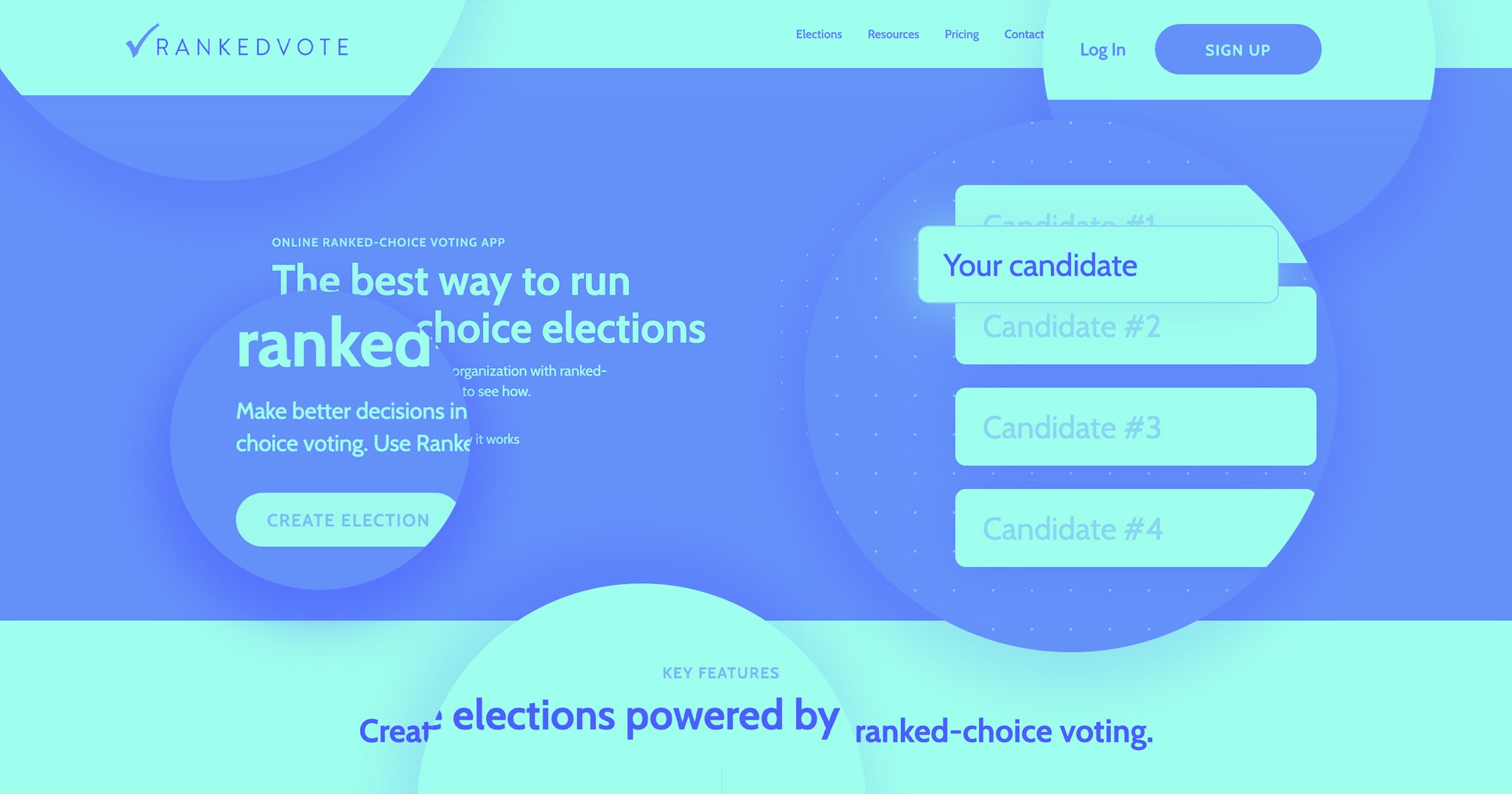42% of startups fail because they don’t solve a big enough market problem. Take the time to find market validation for your idea and increase your chances of success — the kind we’ve seen at Dropbox, DoorDash, and Robinhood — with the help of Webflow.
Promoting a new startup can feel a lot like surfing. We all want to ride the wave of the latest trend …
And to do it without blinking an eye, making everything look effortless.
The problem is, most startups end up underwater.
Startup founders get excited about new ideas, but often fail to effectively communicate and validate those ideas with real data.
Why validate?
In business, cool ideas are easy — everyone seems to have them. But what really matters is having customers.
Most people aren’t willing to buy into a new product until there's some sort of idea validation. There needs to be a real problem worth solving, that has been thoroughly tested, proven, and widely used.
If we look at a market adoption curve showing how a new startup enters a market, we see that 40% of the market won’t use a product until it's used by enough people in the early majority. Social proof, such as social media, is a big reason among many.

CB Insights did a report on the Top 20 Reasons Startups Fail and the number one reason at 42% is no market need.
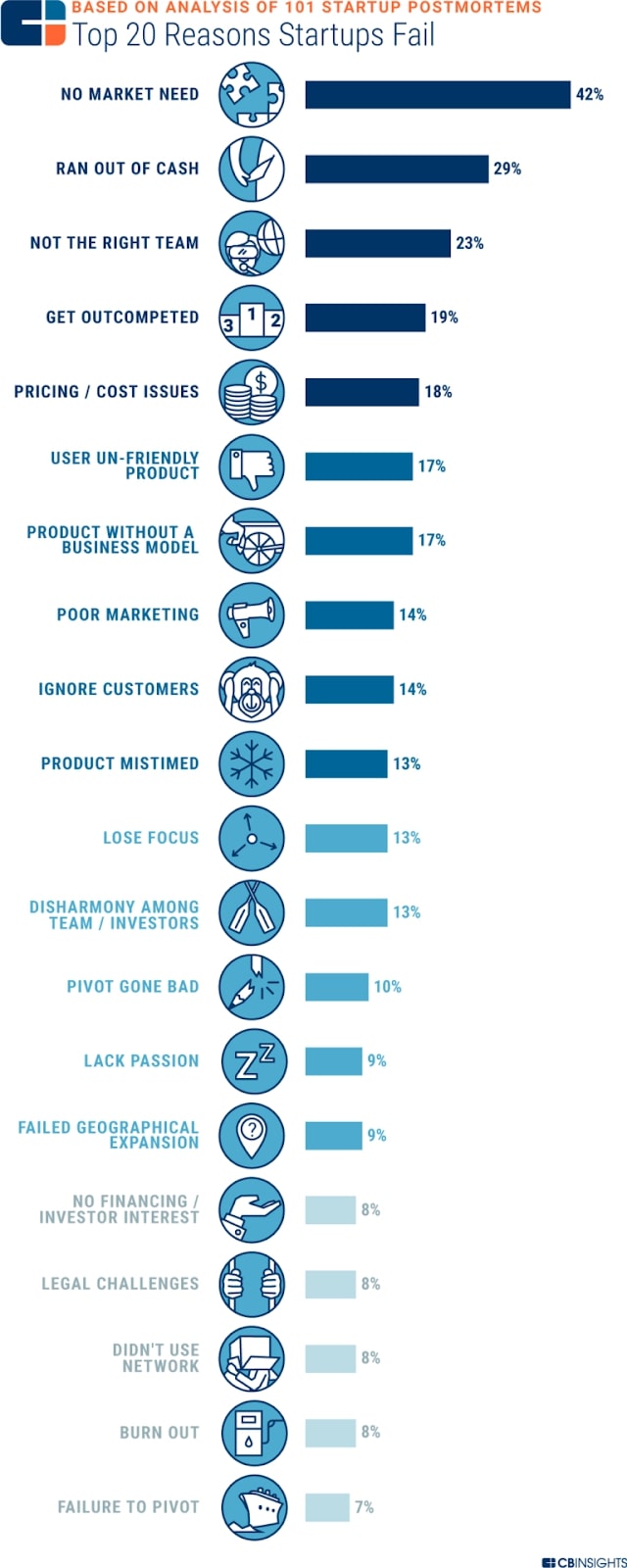
There will always be a lot of initial assumptions in the early stages of a company — but it’s important to continually question and validate those assumptions with real data.
For example, you might ask questions like:
- Who is the ideal audience?
- Where is that audience?
- What is the value proposition that appeals to them?
- What motivates people to engage with our brand?
- What drives brand value and repeat purchases?
Once you understand what questions need to be answered, you can map those questions to a customer journey and focus on validating the most important question:
How can I create a customer?
When you can answer this, you’ll have validated your startup.
Validate like Dropbox, DoorDash, and Robinhood
All the top startups in Silicon Valley had to validate their assumptions and build an MVP (minimum viable product). They all had to answer key questions about their audience, value proposition, and converting leads into paying customers.
Each of these successful companies had a validation process that started with a simple landing page, ran experiments, and gained valuable feedback about their idea. These are critical steps for a founder to tackle.
At Dropbox, they created a simple landing page with a demo video and a sign-up form to collect emails. They wanted to test if potential customers would be interested enough to share their email and learn more — that is, find out if there was “market demand.”

Robinhood set up a landing page to highlight their key differentiator — $0 commission stock trading. They included a viral share option and rapidly grew their email list before they even had a product.
This helped them build a massive email list and create a sense of community that became an audience they could test with during the product development process.
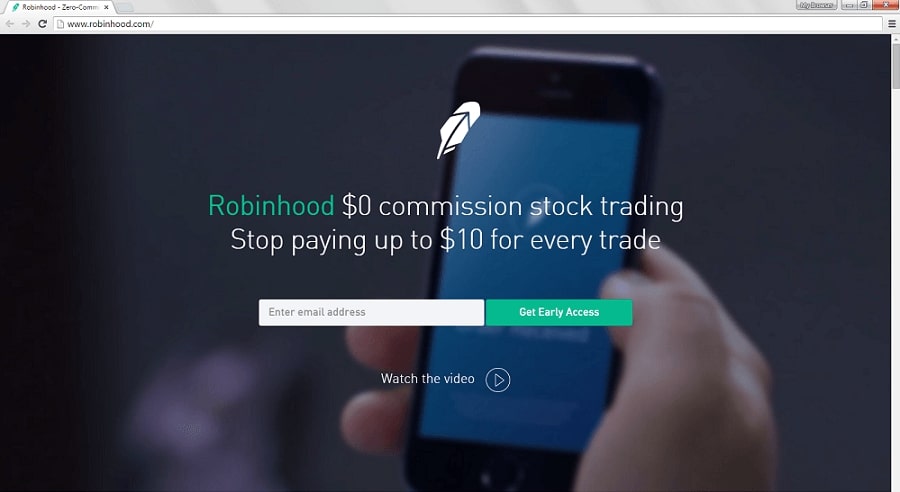

I helped a client validate their startup idea by setting up a landing page that included a sign-up form and outlined their value proposition and key benefits. We added screenshots of the app’s features to gauge interest.
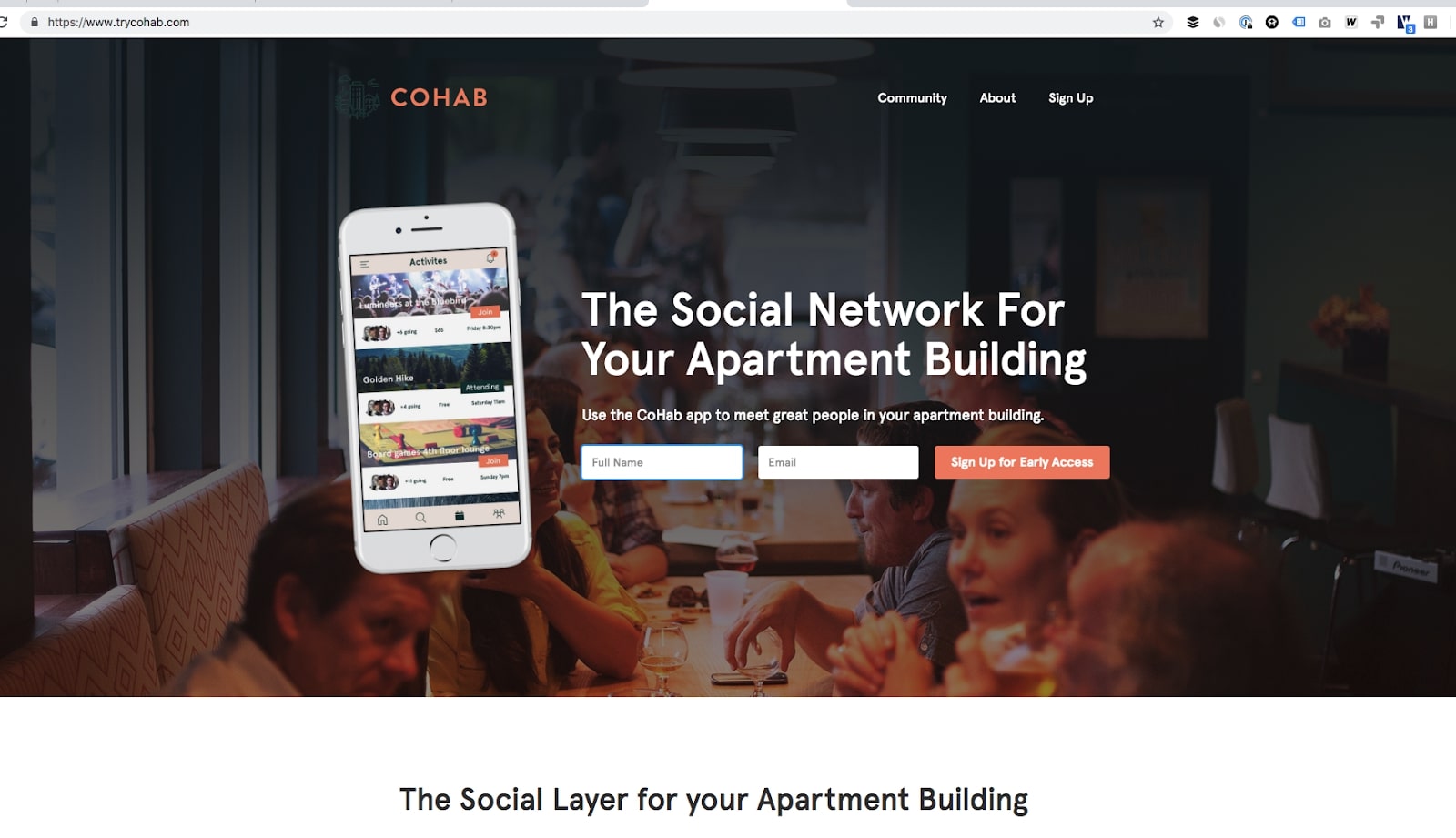


While every startup will ask slightly different questions, they all take a similar approach to defining their assumptions, creating new experiments, and testing those experiments to validate or invalidate the outcome.
Define the audience
Before you can solve any problem, you need to understand it. This almost always starts with understanding your customer/market/audience — a group of people who share the problem or set of problems you’re trying to solve.
To define and understand your audience, it’s important to consider them from a few different angles.
Demographics
What are the characteristics of your audience? This should include things like:
- Gender
- Age range
- City
- Job title
- Marital status
- Level of income
- Level of education
For a business-to-business (B2B) market, you might decide to target lawyers in New York City, ages 30–45, who earn an annual income of 130 thousand or more.
For business-to-consumer (B2C), you might target single people in Boston, Philadelphia, and New Jersey between the ages of 21–35 who are studying for a bachelor's degree.
Interests
Another way you might want to define your audience is based on their interests. This is a common and highly effective targeting method on Facebook — it shows what brands your audience already engages with.
For our B2B example, you could specify lawyers interested in specific software companies, like Apple and Google. They’re likely early adopters of technology vs legacy software users.
For the B2C example, you could reach computer science and business students by targeting people interested in specific schools, like MIT and Harvard. Or you could target competitors to reach the same type of product affinity.
Website analytics
A final way to define your audience — which will become important when you advertise with remarketing campaigns — will be your website analytics.
This includes tracking metrics like:
- Acquisition channels (where they came from)
- Devices used
- Number of pages visited
- Session time
- Bounce rate
- Completed conversions
This data can be used to define and remarket to audiences who’ve interacted with your website in specific ways — pushing out additional content that creates urgency and closes a sale.

Get started for free
Create custom, scalable websites — without writing code. Start building in Webflow.
Creating a customer persona
Once you have enough data on your target audience, you’ll want to create a target customer persona to outline the profile of your ideal client in a single document, sometimes know as a “source of truth.” This will be your initial set of assumptions you’ll use to test and find product/market fit.

Model experiments in Webflow
Creating a new customer is hard work. It requires a lot of experimentation and testing to get right. Creating a customer is really about cultivating a relationship — a series of engagements strengthened from multiple points. Each point builds the customer relationship, develops trust, and helps them make decisions about your product.
Almost everything you’ll do with your content marketing strategy is meant to strengthen the customer relationship and drive users closer to completing a goal. In marketing, this is known as a campaign.
Sometimes the best campaigns are experiments that turn out to be successful. Experimenting with your campaigns can help you stay creative and focus on what serves your audience.
Webflow gives you the functionality to easily model new campaign experiments for each stage of the customer journey. If you were to view a funnel report in Google Analytics, you might see something like this:

To create the right type of content across each stage of your funnel, or “customer journey,” you’ll want to consider the stages a buyer goes through.
Here’s a quick breakdown of the stages of the funnel, and the types of content typically associated with each:
Awareness
The awareness phase is when a user discovers and engages with your brand for the first time.
In this stage, you’ll want to drive site visits through blog posts, ebooks, guides, or checklists.
Interest
Once the user has interacted with your brand in the awareness phase and decided they want to know more, they move into the interest phase and become a lead.
During this stage, you’ll want to collect leads with webinars, case studies, and email courses.
Conversion
Finally, once a user has been engaging with your brand consistently and trusts your offer, they’ll reach the conversion stage and make a purchase, depending on your business model.
In this final stage, you’ll want to drive purchasing behavior through consultations, coupons, and free trials.
Modeling campaign content types in Webflow
Once you understand what type of content will move users through a customer journey, you can begin to model those content types in Webflow.
For example, let’s say you wanted to model a campaign Collection to create new landing pages for those campaigns. You would create a new Collection from the CMS Collections tab and name it “Campaigns.”
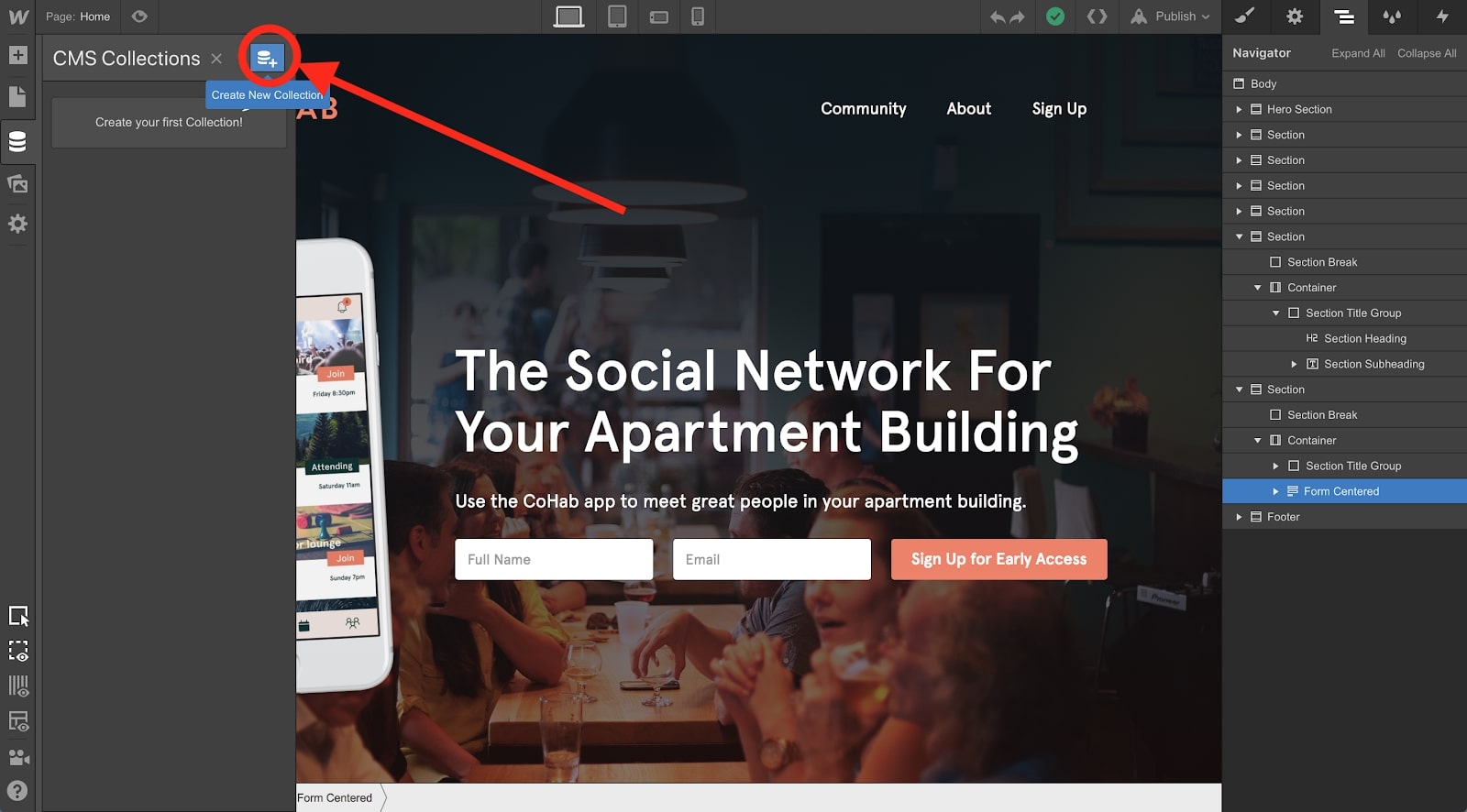
You would then include the common data attributes of your campaigns which might include:
- Headline
- Subheading
- Key benefits
- Call to action
- Call to action link
- Body content
You could also use Webflow’s option field type to create a set of options for a layout experience (more on this below). This would allow you to adjust your design using conditional visibility and create multiple experiences to test with.


Design campaign experiments
When you design campaign experiments, you’ll want to design multiple layout experiences to test assumptions for each campaign. Layout experiences should be based on the message you’re promoting and the stage of the customer journey you’re targeting.
You can think of your campaign templates as the container for your data. The data is the content and the layout is the container that provides the experience for the user.
For example, let’s say you created 2 new campaigns — a checklist and an email course — to drive awareness and leads.
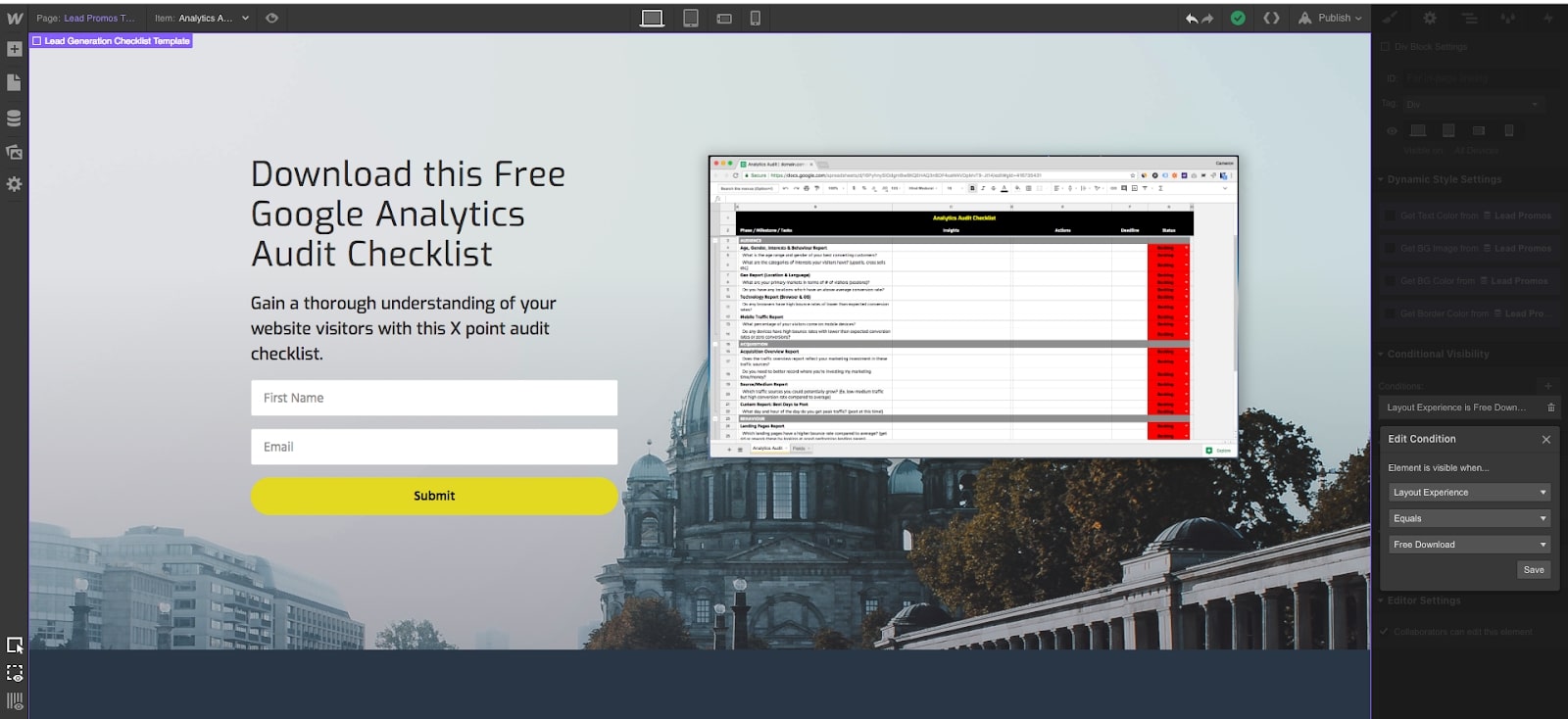
By selecting the layout experience option you created, you’ll be able to render your data in an entirely new way. This reduces the need for additional Collections and helps you speed up experimentation.
Optimize and validate experiments
To create the best customer experience online, you’ll need to review analytics and iterate based on what you learn.
For example, when reviewing your Google Analytics reports, you should ask critical questions about your data:
The audience report
- What’s the age of the audience?
- What’s the gender of the audience?
- What country and city are they coming from?
The channels report
- Where did the traffic come from?
- What was the bounce rate?
- What was the conversion rate?
- How many conversions were generated?
The funnel report
- How far did they get through the funnel?
- Where did they drop off?
These reports will give you key insights about your audience and help improve your campaigns — Google Optimize is a great tool for this.
You can set up A/B tests to make changes like:
- Updating the copy
- Adding new media
- Changing the targeting
- Updating landing pages with high bounce rate
Over time, you should begin to see distinct audience segments respond to specific campaigns and perform better than others. And you can have confidence that your assumptions are indeed proven (or subverted!): a specific audience, with specific campaigns, and a specific experience will produce a desired outcome — usually sales.

The tl;dr (too long; didn’t read)
Creating real value in a market is full of changing dynamics: the existing supply (competition), trends, user needs, trust, and, of course, the market adoption curve. It requires a lot of target market research.
If you truly want to build a startup, you absolutely must validate your assumptions. Webflow makes this easy to do with the right Collections, the right content, and an engaging experience.
When you focus on your potential users, gain their trust, and sell them your product, you’ve validated your idea.
A good way to know whether or not you have reached product/market fit is if at least 40% of your users would be very disappointed if they could no longer use your product. Make things people want.
—Sean Ellis






